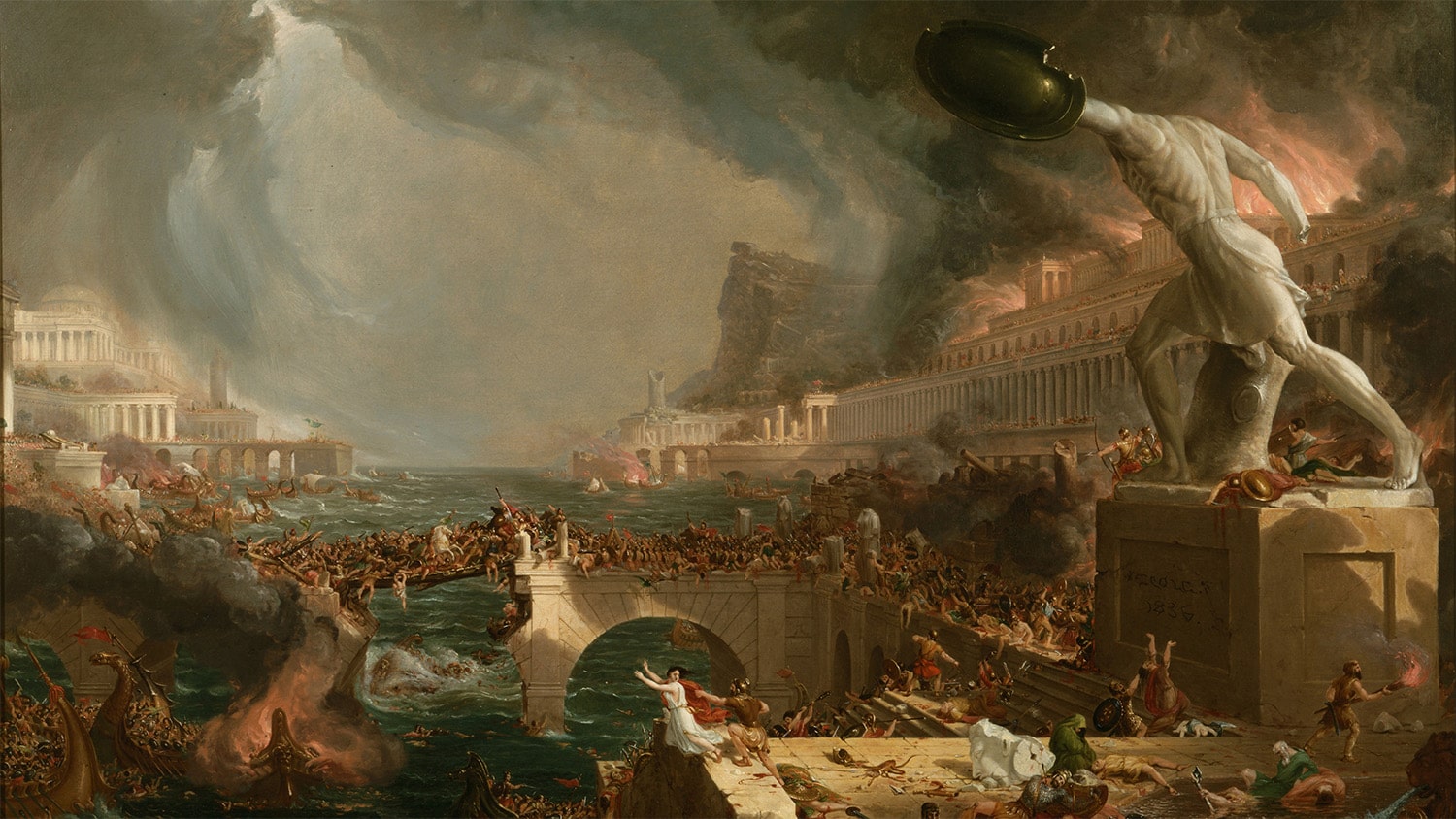
24 interesting facts about Fall of the Roman Empire
- 👁️ 395
The fall of the Roman Empire is one of the most pivotal moments in Western history, marking the end of ancient Rome’s dominance and the beginning of the Middle Ages. This complex and multifaceted process unfolded over several centuries, influenced by a combination of internal strife, external pressures, and gradual transformations in the empire’s political, social, and economic structures. The decline of Rome did not happen overnight but was the result of persistent challenges that eroded the empire’s foundations. Understanding the fall of the Roman Empire sheds light on the fragility of political entities, no matter how powerful they may seem. Here are 24 interesting and informative facts about the fall of the Roman Empire that highlight the depth and breadth of this historical event.
- The traditional date for the fall of the Roman Empire is 476 AD, when the last Roman emperor of the West, Romulus Augustulus, was deposed.
- The Eastern Roman Empire, known as the Byzantine Empire, continued to exist for another thousand years until it fell to the Ottoman Turks in 1453.
- Economic troubles, including heavy taxation and reliance on slave labor, weakened the Roman economy and its ability to sustain a large army.
- Political corruption and instability, with frequent changes of rulers and civil wars, undermined the government’s effectiveness.
- The empire faced significant pressure from invading tribes such as the Goths, Vandals, and Huns.
- Rome’s military structure changed over time, increasingly relying on mercenaries who had less loyalty to the empire.
- The division of the Roman Empire into the Western and Eastern Roman Empires in 285 AD by Emperor Diocletian created distinct political and cultural identities.
- The spread of Christianity and the eventual adoption of Christianity as the state religion by Emperor Constantine I changed the empire’s religious landscape.
- Environmental factors, including climate change and pandemics like the Plague of Cyprian, impacted agricultural production and population numbers.
- The devaluation of Roman currency and inflation significantly impacted the economy.
- The Roman legal system, including the Code of Justinian, influenced Western legal traditions long after the empire’s fall.
- The migration period, also known as the Völkerwanderung, saw various Germanic peoples move into Roman territories.
- Military defeats, such as the Battle of Adrianople in 378 AD, where the Goths defeated the Romans, marked significant losses for the empire.
- The construction of the Aurelian Walls around Rome reflected the increasing threat of invasion.
- Rome’s reliance on foreign mercenaries for its armies by the late empire diminished military discipline and effectiveness.
- The loss of territories, such as the province of Africa to the Vandals, deprived Rome of crucial economic resources.
- The Huns, under leaders like Attila, posed a significant threat to Rome’s borders.
- The sack of Rome by the Visigoths in 410 AD and later by the Vandals in 455 AD symbolized the empire’s vulnerability.
- The concept of “Roman citizenship” expanded to include all free men within the empire by the Edict of Caracalla in 212 AD, diluting its value.
- Social decay and moral decline were cited by contemporary and later historians as factors contributing to the empire’s fall.
- Innovations such as the development of concrete allowed Romans to build structures like the Pantheon, which still stands today.
- The division of the empire made it difficult to mobilize resources effectively against external threats.
- The rise of powerful local leaders in the provinces, who often acted independently of Rome, weakened central authority.
- Despite its fall, the legacy of the Roman Empire continued to influence art, culture, engineering, law, and governance in Western civilization.
The fall of the Roman Empire is a testament to the complexity of historical change, driven by an interplay of internal weaknesses and external pressures. Its legacy, however, endures in the many aspects of Western culture that were shaped by Roman achievements and innovations. The empire’s decline offers enduring lessons on the challenges of sustaining a vast political entity and the factors that can contribute to its dissolution. As historians continue to explore and debate the causes and consequences of Rome’s fall, the story of the Roman Empire remains a compelling chapter in the history of the world.
The fall of the Roman Empire is one of the most pivotal moments in Western history, marking the end of ancient Rome’s dominance and the beginning of the Middle Ages. This complex and multifaceted process unfolded over several centuries, influenced by a combination of internal strife, external pressures, and gradual…